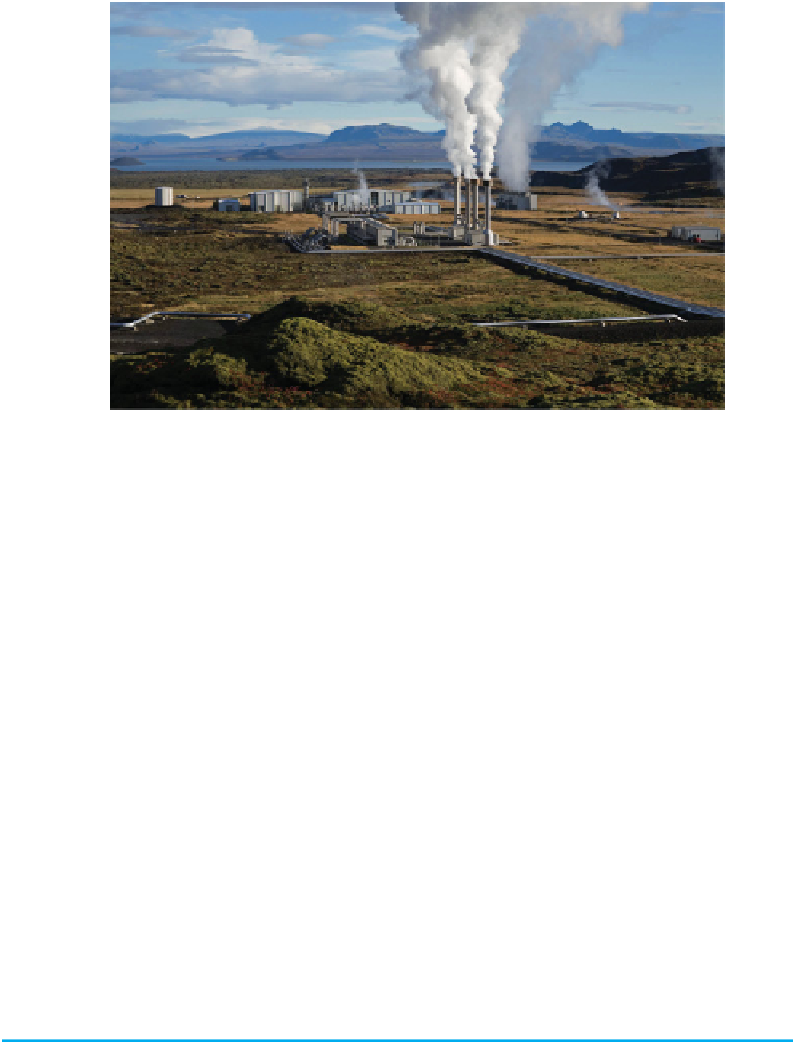Environmental Engineering Reference
In-Depth Information
Figure 10.10
The Nesjavellir geothermal power plant in Iceland.
Photo: Gretar Ívarsson.
greenhouse potential. If 1 kg of this material reaches the atmosphere, it produces
the same greenhouse effect there as 7.5 tons of carbon dioxide. However, alterna-
tives, such as Isopentan, are available.
In the long term geothermal systems can cause a certain cooling of some localized
areas under the ground. According to the knowledge available today, this has no
effect on the surface.
Relatively little research has been done on the risk of seismic activities. Small
tremors with an intensity of up to 3.4 on the Richter scale occurred in 2006 after
geothermal drilling for an HDR power plant in Basel, Switzerland. During the drill-
ing, water had been compressed at depths close to 5000 m. The tremors caused small
cracks to buildings in the region, so work on the project was halted. The geothermal
company involved has paid compensation for most of the damage.
As long as scientists are unable to predict accurately whether and when tremors can
occur during the compression of water, HDR projects will pose a certain risk in
densely inhabited regions. Hydrothermal geothermal projects that do not require
fi ssures and cracks to be artifi cially created are comparatively safe in terms of any
earthquake risk.
10.6 Geothermal Markets
China, the USA, Iceland and Turkey are the outright leaders when it comes to
geothermal heat use. The USA and the Philippines have the highest power plant
output for geothermal electricity generation (Figure 10.11). Providing more than
50% of the country's energy needs, geothermal energy in Iceland constitutes the

